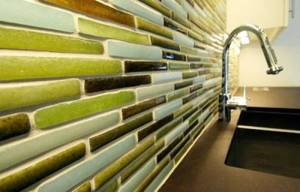When you’re selling a house, you don’t want potential buyers to drive by and keep on going. But if your home doesn’t have curb appeal—if it doesn’t look so great on the outside that people have to stop and take a look—that’s exactly what’s going to happen.
“A home’s curb appeal is always critical, since it’s the first impression for potential buyers,” says National Association of Realtors President Steve Brown, co-owner of Irongate, Inc., Realtors in Dayton, Ohio. “That’s why exterior replacement projects offer the greatest bang for the buck. Projects such as entry door, siding, and window replacements can recoup homeowners more than 78 percent of costs upon resale.”
But don’t freak out and exclaim, “I can’t afford to replace my windows and siding.” Oftentimes improving curb appeal can mean just doing a few small projects that can have a large impact. Many don’t cost a lot of money.
I spoke with three real estate professionals for their suggestions on how to improve your home’s curb appeal on the cheap. Here are their tips.
•Wash the windows.
•Evaluate foundation plantings, and trim back or replace as needed.
•Update the light fixture at the front door.
•Repair or install a new mailbox.
•Replace window treatments inside the house if necessary. “Take a look at the window treatments in the rooms on the front of the house,” suggests DeeDee Bowman, a Realtor with Coldwell Banker Hearthside in Lahaska, PA. “How do they appear from the street or front walk? Update or eliminate if needed.”
•Repair the front walk if it is cracked or heaved.
•Remove dead tree and shrub branches.
•Mow the lawn.
•Power wash your house. Before you hire a professional for this service, check out the Windex Outdoor Multisurface Cleaner, which attaches to a garden hose. I used this product when I was selling my old house, and it cleaned up our vinyl siding and windows so easily.
•Clean the entryway, front lights, and walkway of cobwebs, tree debris, dust, dirt, etc.
•Add colorful, potted plants along your walkway or entryway. “You can often find smaller plants on sale at hardware stores, flower markets, or gardening and home improvement stores,” suggests Romunda Craft, a Realtor with Century 21 Imperial Realty in Daly City, CA. “Another alternative—small succulents planted together in larger containers.”
•Paint your front door. “Doors leave a first impression as you enter the home,” says Inez Tomonelli, a Realtor with Lyon Real Estate in Roseville, CA. “Be sure that it is clean, or even add a fresh coat of paint or new stain.”
•Clean and sweep the driveway.
•Store all yard equipment, including children’s toys.
•Find somewhere else to park any extra cars, boats, trailers, or RVs.
•Do not use the porch for storage.
•Clean up after your pets.
•Store garbage cans where they are not visible from the street.
Curb appeal is the difference that sells nearly half of all houses on the market, so says the National Association of Realtors. If you’re getting ready to sell yours, investing some time and a little bit of money in improving your home’s curb appeal seems like a no-brainer.
Leah Ingram’s favorite price is free! She is the author of 14 books, including two on frugal living. Her book Suddenly Frugal: How to Live Happier and Healthier for Less was just released as an audiobook. Leah is the founder of the popular frugal-living blog called Suddenly Frugal. Right now if you subscribe to Suddenly Frugal, Leah will send you an exclusive freebie. Each week here on Parade.com she’ll be covering different money-saving ideas. If you have an idea, let her know. In the meantime, follow her on Twitter @suddenlyfrugal and “Like” Suddenly Frugal on Facebook.














